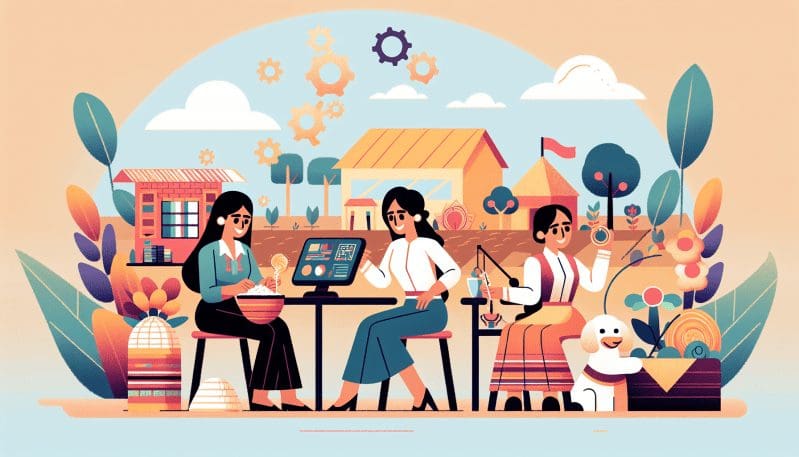The Hidden Struggle: Elevating Rural Women in the Workforce Through Tailored Development Policies
- Home
- The Hidden Struggle: Elevating Rural Women in the Workforce Through Tailored Development Policies
- Editors Desk
- April 12, 2024
- 0 Comments
In the sprawling rural landscapes where the heartbeat of agrarian life thrums, a significant narrative is often left out of the grand dialogues on public policy and rural development: the story of working women. While policymakers and thought leaders discuss strategies to revitalize rural economies, the unique challenges faced by women in these areas are frequently overshadowed, if not neglected entirely.
The traditional image of rural life, with its bucolic charm and community-centric values, belies the hard truths about gender disparities in employment and the disproportionate impact of rural development policies on women. This insight demands a closer examination of how existing policies may inadvertently perpetuate inequality and what reforms could provide the support these women so critically need.
Rural communities are not monolithic; they encompass a diverse range of industries, cultural practices, and socio-economic dynamics. However, a common thread among them is the centrality of women’s labor—both paid and unpaid—in sustaining the local economies. From farming and retail to caregiving and home management, rural women contribute immeasurably to the social and economic fabric of their communities.
Yet, when it comes to formal employment and economic opportunity, these same women face a steep uphill battle. Limited access to education, healthcare, and transportation, coupled with a scarcity of well-paying jobs and workplace policies that overlook the realities of rural life, create barriers that many urban counterparts may never encounter.
For example, a study by the Rural Women’s Health Project found that rural women are less likely to be employed in professional or managerial positions and more likely to work in part-time or seasonal roles that offer lower pay and fewer benefits. This inequity is further compounded for women of color, who experience higher rates of unemployment and poverty in rural areas compared to their white counterparts.
The call to action is clear: policy reforms must not only aim to improve rural economies broadly but also to address the unique needs of working women in these communities. Approaches such as expanding broadband internet access can open up remote work opportunities, while investments in local childcare services can free up time for women to pursue full-time employment or education. Enhanced transport infrastructure would make it easier for women to reach workplaces that are often spread out in rural regions.
Innovative solutions should also consider the integration of gender equality into the rural development agenda. For example, creating incentives for businesses that offer flexible work arrangements and actively recruit and promote women, especially in sectors traditionally dominated by men, could be a game-changer.
The socio-economic benefits of such empowerment are manifold. Studies show that when women participate in the economy, poverty rates drop, and community well-being improves. In rural India, for instance, the introduction of self-help groups that support women entrepreneurs has led to increased family incomes and higher educational attainment for their children.
By weaving gender considerations into the fabric of rural policy-making, we not only address an existing imbalance but also unlock the potential for a more dynamic and resilient rural economy. The time has come for a concerted effort that acknowledges and champions the role of rural women in the workforce. Their inclusion and advancement is not merely a matter of justice; it is a strategic imperative for the sustainable development of rural areas worldwide.
In conclusion, let us remember that the health of a nation’s rural areas is directly tied to the status of its women. As stewards of progress, we must raise the banner for working women in rural communities, paving the way for a future where the fruits of development are shared by all, regardless of gender or geography.


Leave A Comment